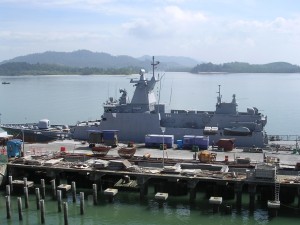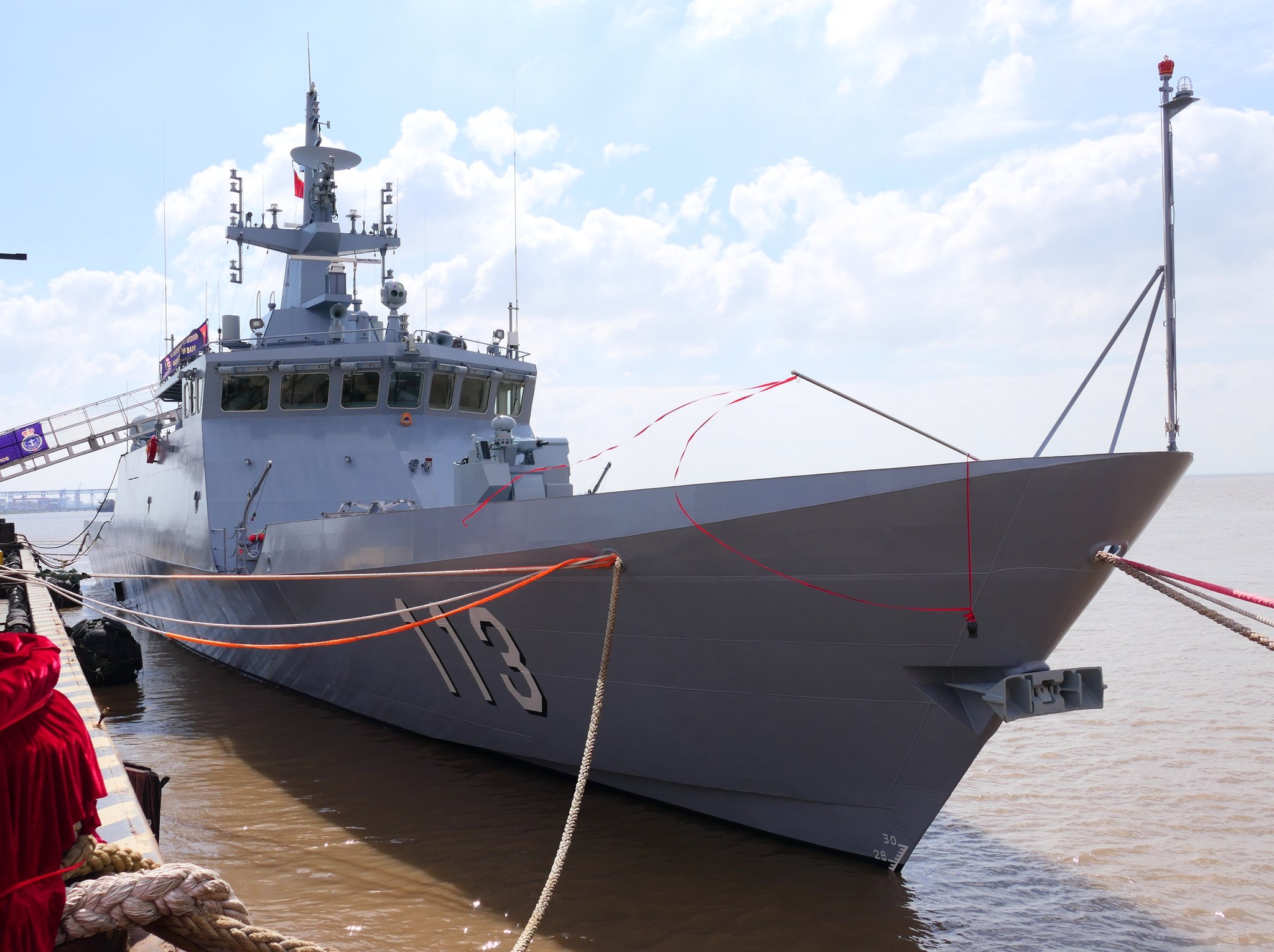KUALA LUMPUR: Auditor general report. The past week, the local media had a field day reporting on the 2006 Auditor-General Report (scroll down the left to find the report in PDF form).
After a week of media frenzy which culminated in Saturday’s reports – on the new KPI points for ministries, state governments and statutory bodies – my former colleagues apparently had forgotten about the report itself apart from some editorial comments and letters to the editors harping on the mismanagement of funds and such.
Most of the media reports seemed to be obsess with the idea of RM200+ screwdrivers and such (a valid issue of course) but oblivious to the billions of ringgit poured into the problematic Patrol Vessel project ran by the Defence Ministry.
Malaysian Defence was only able to download the report on Thursday night but due to other pressing matters (my other jobs) was unable to read it in detail especially those concerning Kenenterian Pertahanan Malaysia .
Tonight after buka puasa and singing lullabies to my sweethearts, I finally read the report and several hours later, came up with this comment.

The AG report on Ministry of Defence covered only two subjects, the first on the Management of Army Combat Uniform and the second The Procurement of Patrol Vessel (PV) for the Royal Malaysian Navy.
On the first subject, Malaysian Defence will comment on it by tomorrow as the whole night was spend reading his favourite subject, the PV project.
As Malaysian Defence had reported on the project since late 90s (and got several front page stories on it), it is understandable that it had become a pet subject.
Reading the AG report, what struck me most was that my last story on the PV while employed by The Malay Mail was almost spot-on on why the PVs were delivered late. The AG report stated that late delivery and ensuing fiasco was caused by the original contractor PSC-NDSB, mismanagement both industrially and financially. I reported during Lima 2005 that the delivery of the first two PVs were delayed partly because PSC sub-contractors refused to hand over the certificate of worthiness as they had not been paid by the company.
What I didnt know and explained by the report, was the fact that the sixth PV will only be delivered by 2010 (a delay of almost 10 years after the contract was signed!) and the cost of the project had went up stratospherically from the original estimates of RM5.35 billion to more than RM6.75 billion, an increase of RM1.4 billion.
And the surprises do not stop there, the first vessel, KD Kedah and KD Pahang (armed with two guns each and mediocre diesel engines able to push only 20 knots) now cost some RM848.19 million, and the four unfinished PVs will be RM1.03 billion each upon completion, meaning that each vessel costs more than the Lekiu frigates (armed with missiles, torpedoes, guns and helicopters and equipped with engines that are able to speed the ship up to 30 knots) and even possibly the batch 2 frigates!
To add to the insult, the audit report stated that the Government had paid RM4.256 billion to PSC-NDSB before the project was taken over the Government-owned Boustaed Holdings. Most of the money was apparently paid as advance payment for PSC-NDSB to purchase major and non-major equipment for the vessels.
Most of these equipment CANNOT be traced now and no one knows where they are or whether PSC-NDSB had actually procured them from its sub-contractors! Unless they got the money back from PSC-NDSB, which is almost impossible now, the Government has to fork out more money to purchase these equipment.
Another surprise for Malaysian Defence was that the RMN chief at the time – in 1994 when PSC-NDSB was being considered to be appointed as the prime contractor – had argued against the Penang-based company selection. Of course, his objections was swept aside.
The audit report also stated that two PVs that had been commissioned into the navy had various defects on them (298 on both ships with 183 rectified while another 81 not repaired by December, 2006, due to the dispute between the navy and the current contractor) and some systems on the ships does not work due to tardiness (the government waffling over which type of helicopter to based on the ship) and teething technical issues.
There are other weaknesses of courses, like the navy’s PV Project Management team in some instances being ignored, especially during payment authorisation periods; irregularities in approving payments in defiance to the contract and government standing orders and others, most notably that some features on-board the PVs cannot be fully utilised as shore based compatible equipment were not installed.
The conclusion of the report states:
22.5. RUMUSAN DAN SYOR AUDIT
22.5.1. Secara keseluruhannya pengurusan perolehan 6 buah PV tidak dibuat
dengan baik dari segi perancangan, pelaksanaan dan pemantauan. Ini telah
mengakibatkan bukan sahaja PV lewat disiapkan bahkan melibatkan pertambahan
kos berjumlah RM1.4 bilion. Antara kelemahan tersebut ialah :-
a. Pemilihan kontraktor yang hanya mempunyai limbungan yang kecil dan
pengalaman membina bot tunda dan bot polis jenis kecil sahaja, masalah
kewangan serta lain-lain masalah yang dihadapi oleh kontraktor merupakan
punca utama yang menyebabkan projek ini gagal disiapkan dalam tempoh yang
ditetapkan.
b. Terdapat beberapa kelemahan dalam syarat kontrak perolehan PV yang telah
menyebabkan Kerajaan terdedah kepada risiko kerugian. Antara lainnya,
kontrak yang ditandatangani hanya menetapkan jumlah pendahuluan
dikurangkan daripada nilai kontrak dan baki nilai kontrak berjumlah
RM4.28 bilion dibayar melalui 32 bayaran kemajuan menyebabkan pihak Audit
tidak dapat menentukan sama ada jumlah pendahuluan diselaraskan melalui
setiap bayaran kemajuan atau sebaliknya. Kontrak juga membenarkan bayaranperolehan peralatan dan sistem utama dibuat hanya berdasarkan pengesahan
pesanan (Confirmation of Order) sahaja, pengesahan terhadap Penyata
Kemajuan Kerja oleh Pasukan Projek PV boleh digantikan oleh Pertubuhan
Klasifikasi Kapal dan tempoh penyerahan PV dilanjutkan bagi mengelakkan
syarikat daripada dikenakan denda lewat. Kontrak juga tidak mensyaratkan
pandangan pengguna (TLDM) diperolehi berhubung dengan Arahan Perubahan
Kerja yang melibatkan keupayaan alat dan penambahan kos.
c. Jaminan Bank Rakan Usaha Sama bernilai RM108.52 juta yang diserah hak
kepada Kerajaan telah luput tempohnya sejak 2 tahun yang lalu.
d. Sehingga 31 Disember 2006, Kementerian Pertahanan telah membayar
sejumlah RM4.26 bilion termasuk bayaran pendahuluan berjumlah RM1.07 bilion
TERHAD
434 TERHAD
kepada kontraktor manakala kemajuan fizikal pembinaan 6 PV adalah bernilai
RM2.87 bilion. Berdasarkan nilai kontrak bagi 6 PV berjumlah RM5.09 bilion dan
nilai kemajuan fizikalnya tersebut, jumlah yang diperlukan untuk menyiapkan
4 PV lagi ialah RM2.2 bilion berbanding dengan baki nilai kontrak berjumlah
RM832.92 juta. Didapati sebahagian besar daripada bayaran berjumlah
RM4.26 bilion itu adalah untuk perolehan peralatan dan sistem secara
Confirmation of Order di mana sebahagian daripadanya tidak dapat disahkan
sama ada telah diterima atau sebaliknya. Sekiranya peralatan dan sistem yang
telah dibayar itu tidak dapat dikesan, Kementerian akan menanggung kostambahan untuk membeli semula peralatan dan sistem tersebut untuk
menyiapkan baki 4 PV tersebut.
e. Justifikasi untuk menaikkan nilai kontrak dengan sejumlah RM1.4 bilion melalui
kontrak tambahan kedua yang ditandatangani pada bulan Januari 2007 juga
tidak dinyatakan dengan jelas. Bayaran berjumlah RM943.46 juta tidak dapat
disahkan oleh pihak Audit kerana baucar hilang/atau tidak dapat dikesan.
f. Dua buah PV yang telah diserahkan tidak dapat digunakan secara optimum
kerana terdapat item/kerja yang tertunggak dan peralatan tidak dipasang di
tempat yang sewajarnya. Kontraktor juga belum menjelaskan tuntutan berjumlah
RM1.09 juta yang dibelanjakan oleh Kerajaan bagi tujuan penyerahan PV
berkenaan.
22.5.2. Memandangkan 4 buah PV masih lagi dalam proses pembinaan yang
melibatkan peruntukan tidak kurang daripada RM2 bilion, adalah disyorkan
Kementerian Pertahanan dan Kementerian Kewangan memberikan perhatian yang
serius terhadap pelaksanaan projek ini dan memastikan kelemahan yang sama
tidak berulang. Sehubungan ini, adalah disyorkan supaya pertimbangan diberi
kepada perkara berikut :-
a. Segala rayuan atau cadangan kontraktor untuk mendapat kelonggaran terhadap
syarat kontrak yang boleh menjejaskan kepentingan Kerajaan perlu diteliti
sewajarnya. Sehubungan ini, pandangan-pandangan daripada Pasukan Projek
PV patut diambil kira.
b. Menubuhkan satu jawatankuasa pemantauan bersama oleh Kementerian
Kewangan dan Kementerian Pertahanan. Jawatankuasa tersebut perlu
mengadakan mesyuarat berkala dan membuat lawatan ke tapak pembinaan
bagi mengesahkan kemajuan kerja.
c. Mematuhi peraturan dan pekeliling Kerajaan yang berkuat kuasa bagi
mengelakkan Kerajaan mengalami kerugian.
d. Membuat keputusan yang tepat dan cepat supaya peralatan yang dibekalkandapat dioptimumkan penggunaannya.
e. Sebarang perselisihan mengenai tafsiran klausa kontrak perlu dirujuk dengan
segera kepada Penasihat Undang-undang atau Jabatan Peguam Negara.
f. Menyelesaikan kelemahan dalam Management Information System dan Ship
Management Information System dengan segera supaya ia dapat digunakan
secara optimum.
Basically, the audit report stated that the Ministry of Defence needs to buck up as the whole project is a perfect example of wastefulness. When you spend RM4 billion plus with another RM1 billion you expect that the thing will shine like gold. For now, its like paying for a German marque but receiving a Proton (I know it is like comparing apple and oranges but since the ships come from Germany and the project was supposed to be the Grand National Project, I believe its some sort of fair analogy).
Bernama quoted DPM Datuk Seri Najib as saying commenting on the financial management accountability index to be introduced by the Auditor-General for all ministries and state treasuries beginning next year, the Deputy Prime Minister hoped the move would contribute towards a more efficient, transparent and responsible financial management.
We are prepared to adopt any approach that contributes towards a more efficient, transparent and responsible financial management and the government supports the approach as long as it is managed with an objective and transparent evaluation,” he added.
Malaysian Defence hopes the PV fiasco will also be part of the accountability issue. But looking at the ministry past performance (based on the previous Aditor General reports) like the transit camp, langkawi naval base and arms depot fiascos, I am not too optimistic.
Furthermore, how is the ministry going to monitor the completion of the project with out-most tenacity as recommended by the report remain to be seen as the current contractor is invariably linked to the same entity and people. Boustead’s shares is controlled by Lembaga Tabung Angkatan Tentera, (LTAT). Take that for accountability!
–Malaysian Defence
If you like this post, buy me an espresso. Paypal Payment




1 Trackback / Pingback